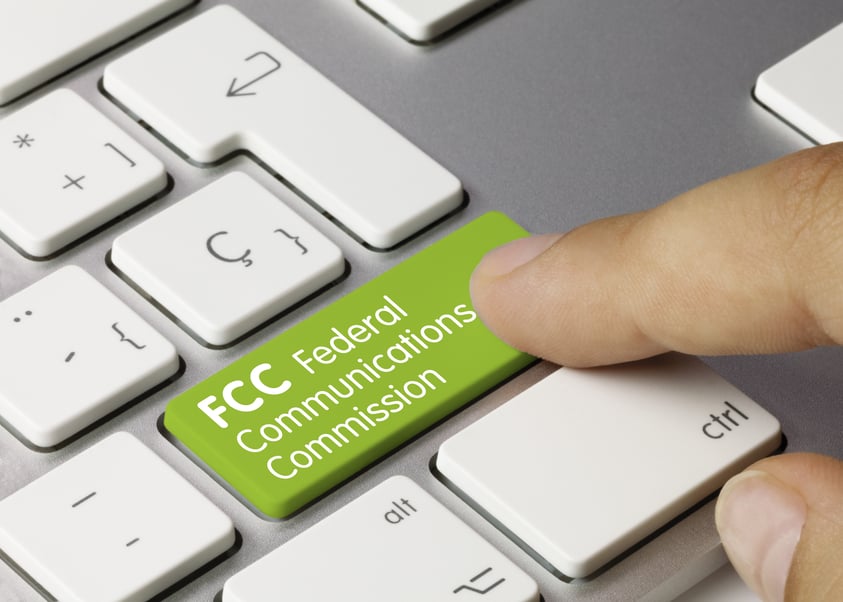Playing by the FCC Small Cell Rules: Timelines

The FCC’s Small Cell Third Report and Order, is all about speed. The Third Report and Order regulates deployment of small cell wireless facilities and the purpose of the FCC rules is to install small cell infrastructure quickly across the nation. Small cell attachments will support the up-and-coming 5G. A timely rollout is vital to keeping the United States on the cutting edge of high-tech advances, which promise much faster bandwidth and a vast array of new home automation services via the Internet of Things.
The need for speed is embodied throughout the Order’s new, shorter timeline for small cell applications and deployment. The Order establishes what the FCC calls “shot clocks” for the application process.
The timeline applies to every type of permit or license that a city requires before a provider can attach small cell equipment to a public utility pole, streetlight, or other structure. The timeline also applies to those wanting to install small cell as a stand-alone structure in the public right-of-way.
Setting the Clock
Since 2009, the FCC has required that local governments across the country follow a timeline for ruling on cell tower applications: 150 days for construction of a new tower and 90 days for new use of an existing tower.
Last year, the FCC decided a shorter timeline was more appropriate for local governments when reviewing small cell applications, in which the equipment is housed in a unit ranging from the size of a pizza box up to 28 cubic feet. The order allows 90 days to consider construction of a new small cell facility and 60 days for attachment of small cell equipment to existing structures. The clock starts ticking as soon as the local government receives a provider’s application.
In its report, the FCC explains why the timelines have shortened:
- Smaller facilities have smaller impact and should require less time to review.
- Years of experience with large cell towers “have increased the efficiency of deploying wireless infrastructure.”
- Many governments routinely process applications in less time than the FCC allows, and some states already have shorter timelines in place than the new FCC rules.
Resetting the Clock
Applications to attach must contain a certain information (filled out by the provider) before the city government can approve it.
So, what happens if the provider’s application does not contain all the information a city government requires? The new rules allow the city to stop the shot clock for an incomplete application.
If a city notifies a provider within 10 days of receiving an incomplete application, the clock stops and then starts over at zero when the provider submits a revised application. If the revised application remains incomplete, the city again has 10 days to notify the applicant and pause the clock.
Missing the Deadline
If a city fails to rule on a provider’s application within the time required, it is expected to approve the application immediately.
If that does not happen, the provider can seek an expedited court order approving the application on the grounds that the government “failed to act” and, by doing so, “effectively prohibited” the company from competing fairly in the market. If the government has a legitimate justification for the delay, it can present its reasons to the court.
Timeline for Other Asset Owners
For poles owned by utility companies instead of municipal governments, a different timeline applies. The FCC established this timeline in its August 2018 One Touch Make Ready order, which took effect in February.
When a utility receives an application for small cell attachment to its property, it has 10 days to decide whether the application is complete, according to the OTMR order. Each time the applicant submits a revised application, the asset owner has five days to rule on its completeness. When the application is complete, the asset owner has 15 days to approve or reject it.
Once an application is approved, the company installing the small cell equipment must give the asset owner, and any other companies that have attachments on the same pole, 15 days’ notice before performing the work, so those companies may have representatives present in the field.
Teamwork is Essential
Time is of the essence to accomplish effective deployment of small cell wireless across the U.S. The benefits will be shared by all, and the challenges must be met by all members of the joint use community, working together.
A streamlined workflow is the key to meeting the new timelines outlined by the FCC. Outdated, ineffective systems will slow down application completeness, application review, and communications among joint use parties and local governments. These outdated programs must be replaced. Breakdowns and stops in deployment can eventually throw the approval process into court, which is in no one’s best interest. Better solutions are available.
Working together to meet timelines is easier with the right tools. Alden is the nationally-established leader in helping the joint use community work together effectively. Our joint use asset management platform, Alden One®, is designed to ensure compliance with FCC rules regarding small cell deployment, including the new timelines and shot clocks. Alden’s automated workflows keep applications and requests on track, while dashboards give all parties a clear overview of project status.
The fast-paced deployment that the FCC is mandating can be managed without chaos. Alden’s experts can help with real solutions. Click the link below to get started with a simple solution.

